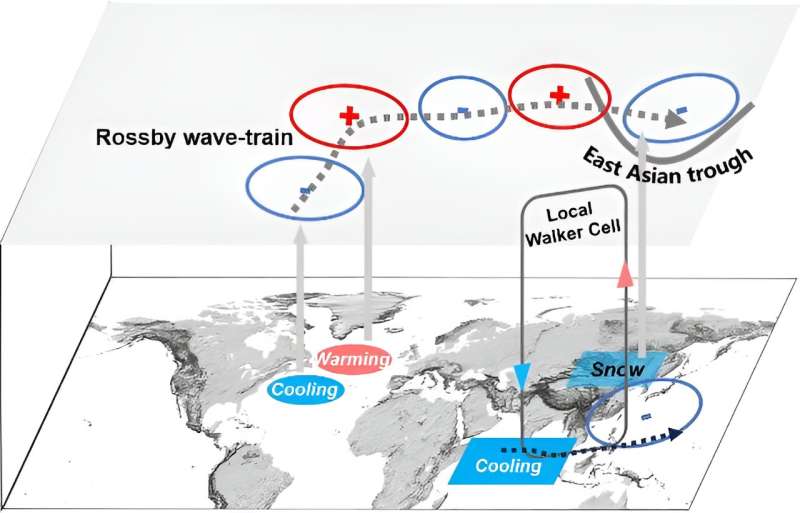This article has been reviewed according to Science X's editorial process and policies. Editors have highlighted the following attributes while ensuring the content's credibility:
fact-checked
trusted source
proofread
New study unveils east Asian spring climate influencers

In a study published in Advances in Atmospheric Sciences, researchers from the Institute of Atmospheric Physics (IAP) of the Chinese Academy of Sciences have found significant relationships between March and April variations in the East Asian trough (EAT). This atmospheric phenomenon, similar to a persistent low-pressure belt, plays a crucial role in determining East Asian's climate and weather during the crucial spring months.
Spring is a crucial transition period in the East Asian atmospheric circulation, where different evolutions of the intraseasonal-scale circulation anomalies give rise to different climate anomalies. Seasonal averages often fail to effectively capture the evolving characteristics of the monthly-scale circulation, posing a challenge to understanding and predicting East Asian spring climate anomalies.
In this study, the researchers identified a persistent mode of EAT monthly variability in March–April, accompanied by long-lasting climate anomalies such as air temperature and precipitation over the region.
In exploring the potential mechanisms behind the persistent EAT anomaly in March–April, they identified culprits, including persistent dipole sea surface temperature (SST) anomalies in the mid-latitude North Atlantic, capable of triggering Rossby wave trains that influence the March–April EAT; a tropical Indian SST anomaly that influences the Walker circulation and lower tropospheric atmospheric circulation in the western Pacific, significantly affecting the southern part of the EAT; and the persistent snow cover anomalies in Northeast Asia that alter local thermodynamic properties and favor the persistence of northern EAT anomalies in March–April.
"Remarkably, signals from these impact factors could be traced back to February," said Prof. Sun Jianqi, corresponding author of the study. "These signals provide a valuable temporal window for predicting persistent East Asian climate anomalies in spring."
This new understanding has the potential to improve the accuracy of regional climate predictions, thereby contributing to more effective disaster prevention and mitigation efforts.
More information: Shui Yu et al, Persistent Variations in the East Asian Trough from March to April and the Possible Mechanism, Advances in Atmospheric Sciences (2024). DOI: 10.1007/s00376-023-3024-7
Provided by Chinese Academy of Sciences





















